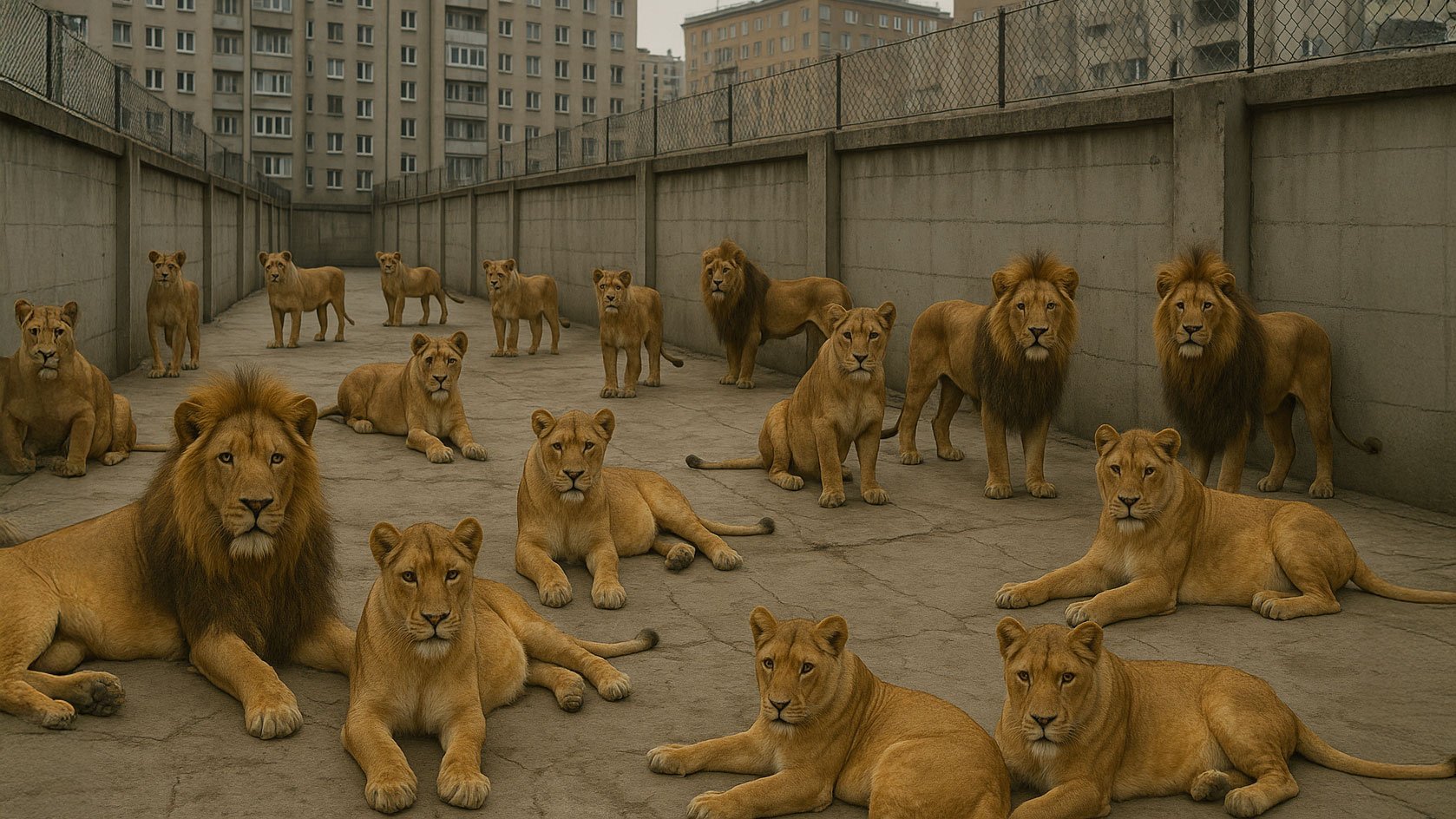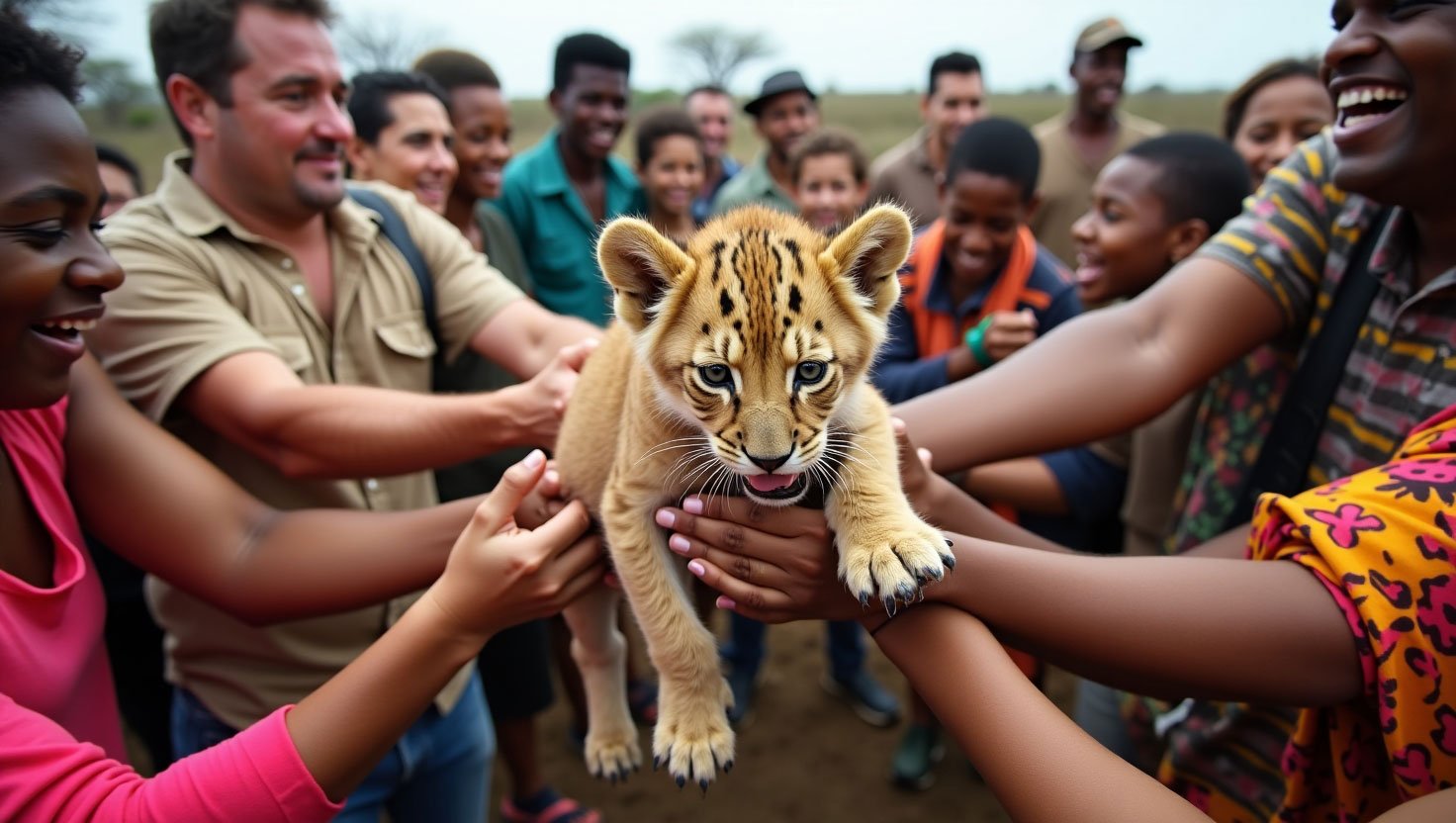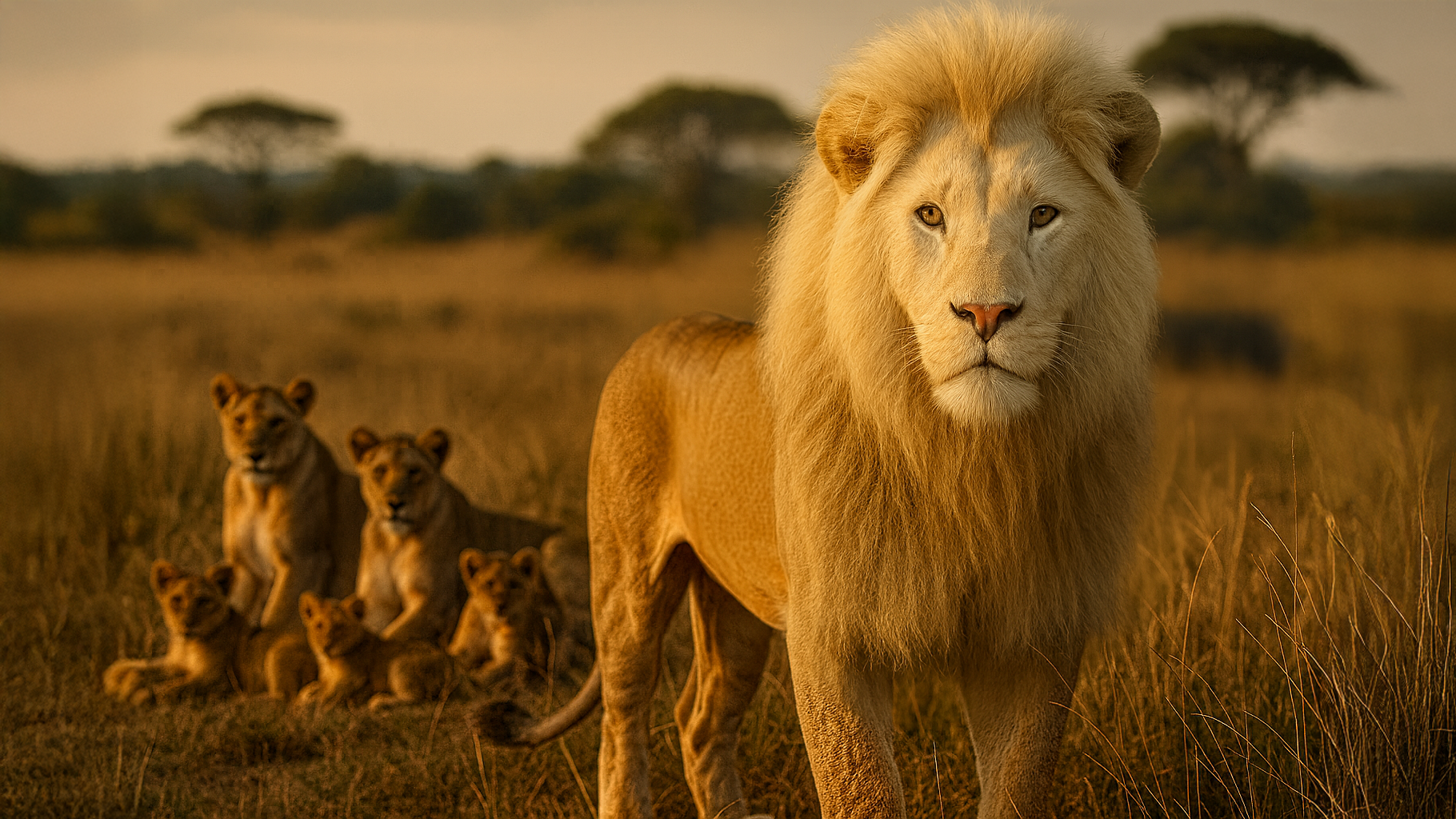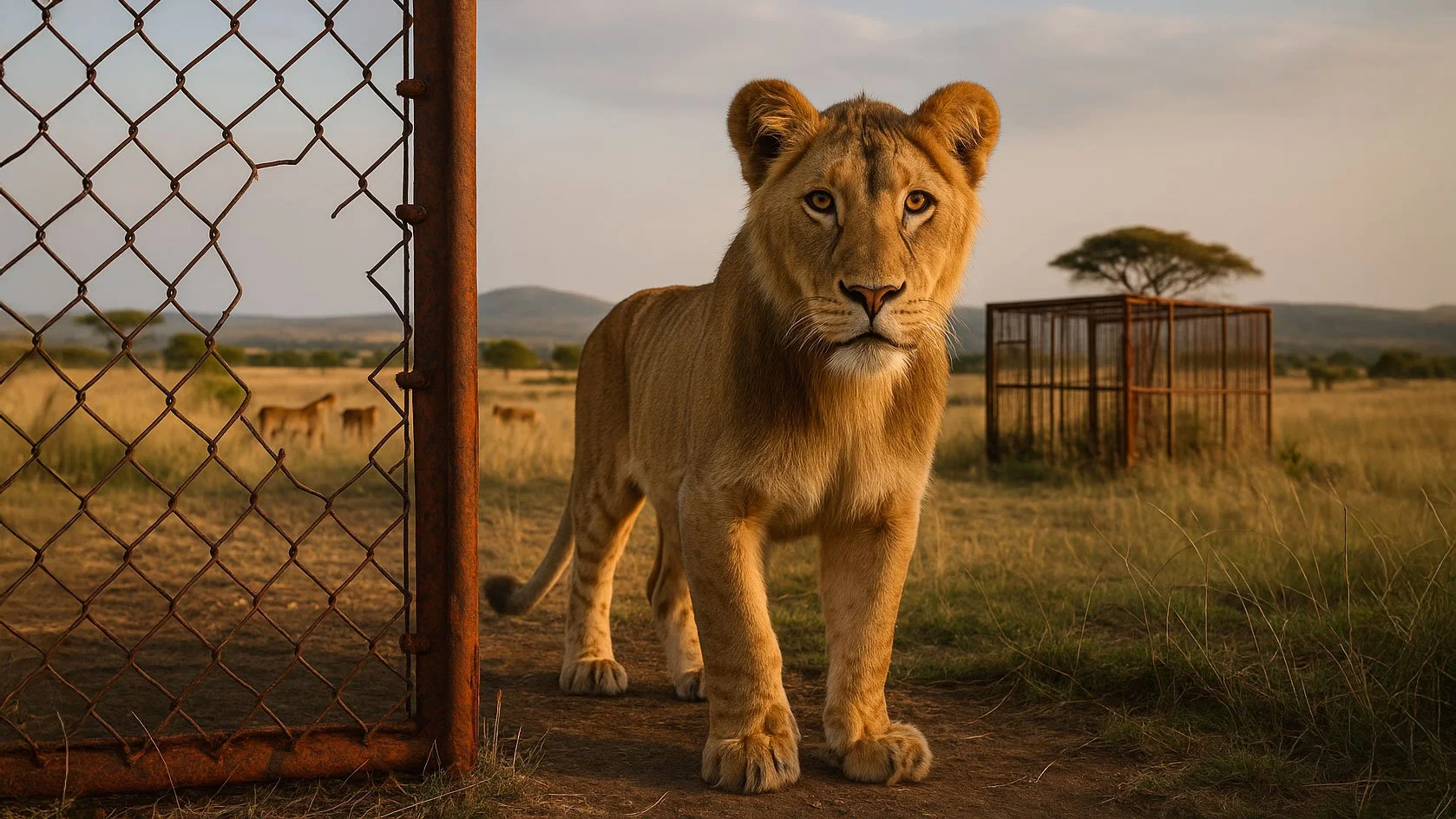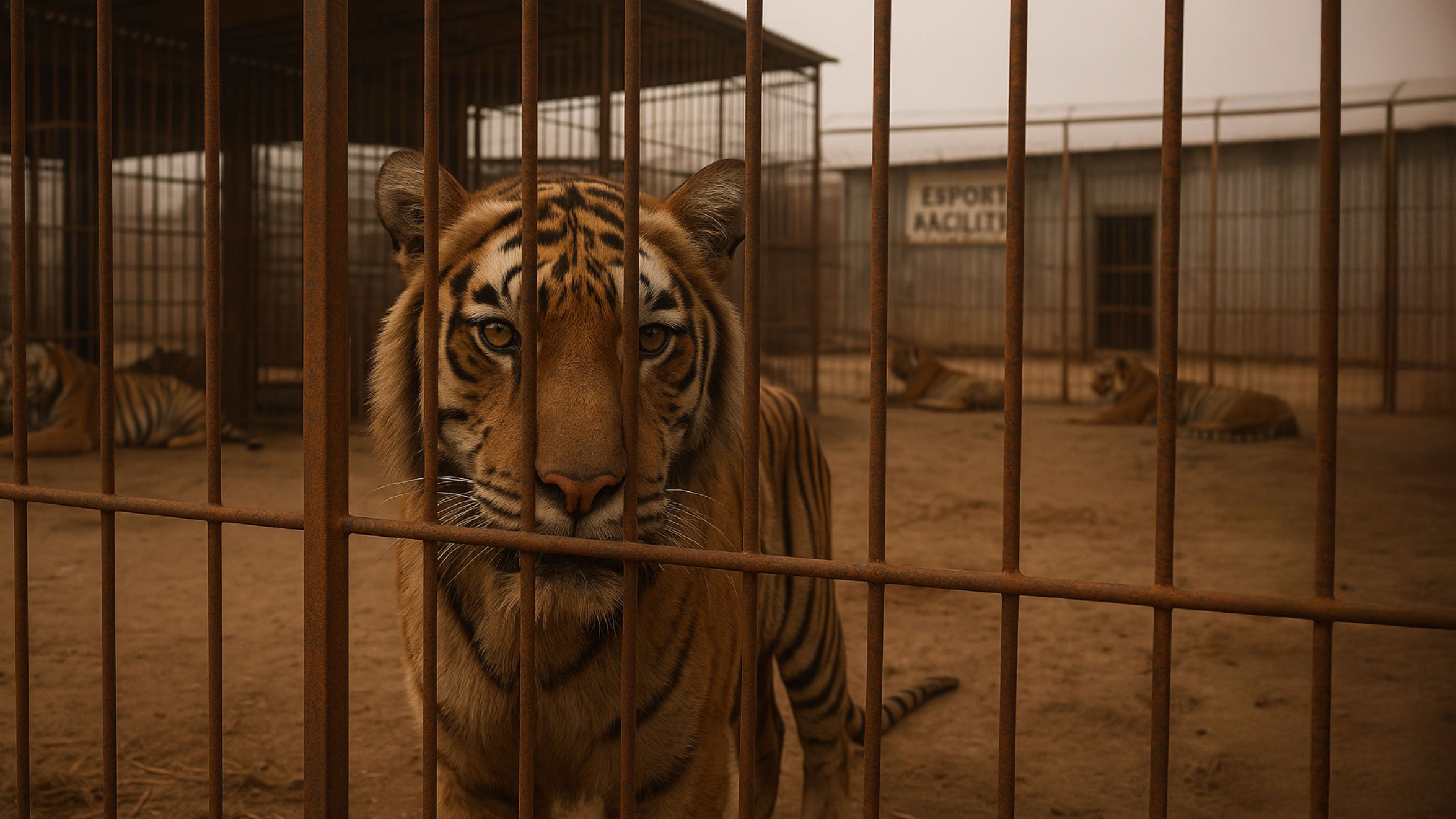The Roar Behind the Walls: Why Lions Don’t Belong in Living Rooms
In the heart of Lahore, Pakistan, just days ago, a lion leapt over a wall and into chaos. A woman and her two children, simply going about their lives, were attacked in a moment of terror that no one could have predicted—or rather, no one should have had to. Miraculously, they survived. But their brush with death unveiled a much deeper tragedy lurking behind the high gates of wealth and prestige: the hidden world of wild cat ownership in Pakistan.
The lion, once an apex predator of open savannahs, had been reduced to a backyard trophy—kept illegally as a pet in a densely populated urban area. This wasn’t an isolated case. In the days following that harrowing escape, Pakistani authorities launched a targeted operation in the Punjab province, ultimately rescuing 18 lions from illegal captivity. But this is just the tip of the mane.
According to Mubeen Elahi, Director General of the Wildlife and Parks Department, more than 500 lions and tigers are being housed in private homes and breeding farms in Punjab alone, a region where dense human populations, insufficient regulation enforcement, and the glamorization of exotic pets combine in a dangerous cocktail.
A Tragedy Foretold
Wild cats, including lions, are not playthings. They are apex predators with powerful instincts that cannot be tamed by proximity to humans. While the lion in Lahore was relocated to a safari park and its owner arrested, the bigger question is: how did it come to this?
In many wealthy circles across Pakistan and other countries, owning exotic animals is seen as a status symbol—a show of power, luxury, and influence. But this façade comes at a devastating cost, both to public safety and to the animals themselves. Captive lions endure confinement in small enclosures, inadequate nutrition, lack of mental stimulation, and often suffer from physical and psychological trauma.
Breeding farms, operating under the radar or within loosely regulated frameworks, are fueling this crisis. In the recent sweep of 38 such farms, eight individuals were arrested for violating wildlife laws. But until all 500+ big cats are accounted for, the threat remains ever-present.
The Global Pattern of Exploitation
Pakistan is not alone. Across the globe, wealthy individuals purchase wild cats like luxury watches. From private menageries in the Middle East to “Tiger King”-style backyard zoos in the U.S., this trend is neither new nor limited by borders.
However, change is possible. In the United States, the Big Cat Public Safety Act, passed in December 2022, made private ownership of big cats and public contact with them illegal. This landmark legislation followed decades of advocacy, particularly by Big Cat Rescue and its supporters, proving that people can—and will—demand better for animals.
A Crisis of Conservation
Lions in the wild are in steep decline, with their populations plummeting by over 90% in the last century. Habitat loss, poaching, and human-wildlife conflict already threaten their survival. Now, illegal and unethical captivity adds another nail in the coffin.
When lions are bred for status, they are not just being stolen from the wild physically—they are also being erased from the public’s understanding of what it means to be wild. Children growing up thinking lions belong in cages or on leashes will never fight for their protection in the wild. We must reframe this narrative before it's too late.
A Roar for Reform
This incident in Lahore should be a wake-up call—not just for Pakistan, but for any country where the elite feel entitled to own wildlife. Real status isn’t shown through chains and cages; it’s demonstrated through compassion, conservation, and coexistence.
Authorities in Punjab took a bold step. Now, it’s time to go further. Pakistan needs stronger laws, better enforcement, and public awareness campaigns that make it unthinkable—not admirable—to own a wild cat as a pet.
And for the rest of us? It starts with using our voices, our platforms, and our wallets to support organizations that protect big cats in the wild—where they belong.
Let’s Leave the Wild to the Wild
If you were moved by the image of a lion leaping over a wall, imagine instead that same lion roaring across a golden savannah, playing with its pride, hunting, thriving—not pacing in boredom behind bars. That’s the future we must fight for.
Support the global movement to protect wild cats. Share their stories. Advocate for better laws. And remember: the only rightful home for a lion is the wild.
See the video of the attack as the lion leaped over the wall: https://www.dw.com/en/pakistan-authorities-seize-18-lions-kept-as-pets/a-73187391
